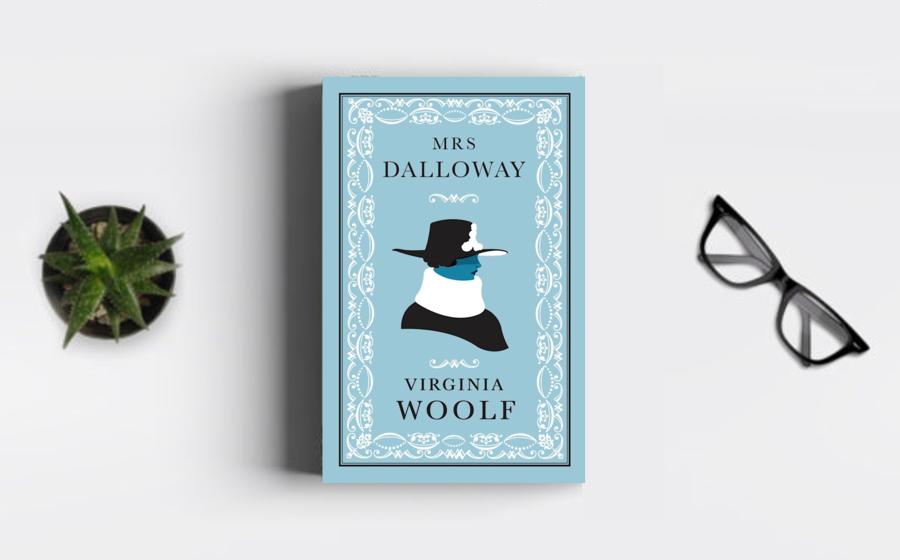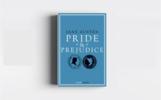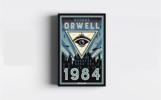"Mrs. Dalloway" stands as a beacon of modernist
literature, weaving a tapestry of consciousness, time,
and societal critique. Published in 1925, this
groundbreaking novel delves into the inner lives of its
characters over the course of a single day in post-World
War I London. As we traverse the streets of London with
the eponymous protagonist, Clarissa Dalloway, and
encounter the diverse cast of characters interconnected
through their thoughts and experiences, it becomes
evident that "Mrs. Dalloway" is more than a novel, it is
a nuanced exploration of the human psyche and a
reflection on the societal upheavals of the early 20th
century. Its innovation in narrative technique, thematic
richness, and profound insights into the complexities of
existence firmly establish it as one of the top books of
all time.
At the heart of "Mrs.
Dalloway" lies Woolf's masterful use of the
stream-of-consciousness narrative technique. The novel
unfolds through the unfiltered and meandering thoughts
of its characters, providing readers with a direct
access to their innermost reflections. This narrative
innovation allows Woolf to create a rich and complex
tapestry of consciousness, presenting the characters'
inner monologues, memories, and fleeting sensations in a
continuous flow.
Clarissa Dalloway's stream of
consciousness serves as the narrative focal point,
offering readers an intimate glimpse into her thoughts
as she prepares for a soiree. The seamless transitions
between characters' perspectives, including Peter Walsh, Septimus Warren Smith, and others, form a collective
stream of consciousness that mirrors the intricate
network of human connections and the shared experience
of living in a post-war society.
Woolf's
narrative technique challenges traditional linear
storytelling, inviting readers to navigate the labyrinth
of thoughts and emotions. The fluidity of the stream of
consciousness becomes a vehicle for exploring the
complexities of human experience, capturing the
immediacy of perceptions and the elusive nature of
memory.t
"Mrs. Dalloway" is a narrative
where time is not a linear progression but a fluid
entity that intersects and overlaps. Woolf employs a
nonlinear temporal structure, seamlessly weaving between
the present day and characters' recollections of the
past. This temporal fluidity becomes a thematic
exploration of memory, nostalgia, and the enduring
impact of past events on present consciousness.
Clarissa Dalloway's reflections on her youth, her past
relationship with Peter Walsh, and the choices that
shaped her life underscore the interconnectedness of
time. The novel blurs the boundaries between past and
present, suggesting that the past is not a distant
entity but an integral part of the present moment.
Woolf's manipulation of time adds depth to the
characters' experiences, highlighting the cyclical
nature of memory and the inextricable link between
personal histories and contemporary existence.
The temporal fluidity also extends to the portrayal of
societal changes post-World War I. The scars of war
linger in the characters' memories, and the novel
captures the palpable shift in societal norms and values
during this period. The juxtaposition of pre-war and
post-war London becomes a narrative device through which
Woolf examines the impact of historical events on
individual and collective consciousness.
"Mrs. Dalloway" excels in its portrayal
of characters whose lives intersect in subtle and
profound ways. Clarissa Dalloway's connections with
Peter Walsh, Sally Seton, and Septimus Warren Smith
create a web of relationships that mirrors the
complexity of human interactions. Each character
contributes to the overarching narrative, offering
unique perspectives on the shared experience of
existence.
Clarissa Dalloway emerges as a
multifaceted character whose thoughts and emotions
resonate with readers. Her internal conflicts, desires,
and reflections on societal expectations contribute to
the novel's exploration of individual identity within
the constraints of societal norms. The interconnected
lives of the characters serve as a microcosm of the
broader societal shifts and challenges facing post-war
London.
Septimus Warren Smith, a war veteran
grappling with PTSD, becomes a poignant symbol of the
psychological toll of war. His experiences and eventual
tragic fate provide a counterpoint to Clarissa
Dalloway's external composure, highlighting the hidden
struggles beneath the surface of seemingly ordered
lives. The novel engages with the societal silence
surrounding mental health and the impact of war trauma
on the human psyche.
Woolf
infuses "Mrs. Dalloway" with subtle yet powerful
feminist undertones, particularly through the character
of Clarissa Dalloway. As a woman navigating the societal
expectations of her time, Clarissa grapples with
questions of identity, agency, and the constraints
placed upon her by traditional gender roles.
Clarissa's introspective journey becomes a feminist
exploration of female subjectivity. Woolf delves into
the nuances of Clarissa's thoughts on marriage,
motherhood, and societal expectations, challenging the
prescribed roles for women in the early 20th century.
The character's internal reflections on her choices and
desires contribute to the broader feminist discourse on
women's autonomy and the quest for self-definition.
Woolf's subtle critique of the limitations imposed
on female characters is intertwined with the broader
societal critique embedded in the novel. The characters'
internal struggles become a lens through which Woolf
examines the evolving landscape of gender dynamics in
the aftermath of World War I.
"Mrs.
Dalloway" serves as a profound critique of post-World
War I London, capturing the societal shifts and
disillusionment of the time. The novel reflects the
aftermath of war on collective consciousness, with
characters grappling with the scars of conflict, the
loss of a generation, and the erosion of traditional
values.
Woolf's portrayal of London becomes a
canvas on which she paints the contrasts between the
external facade of societal order and the internal
turmoil of individuals. The bustling streets, the facade
of aristocratic parties, and the veneer of civility mask
the underlying tensions and existential angst of the
characters. The novel's societal critique extends to the
examination of class distinctions, societal
expectations, and the transient nature of human
connections.
Septimus Warren Smith, the war
veteran tormented by trauma, becomes a symbolic figure
representing the psychological aftermath of war. His
struggles and ultimate tragedy underscore the broader
societal neglect of mental health and the failure to
address the human costs of conflict. Woolf's critique
extends beyond the individual to the collective,
challenging readers to confront the societal
implications of a post-war world.
Woolf's use of symbolism and vivid imagery enhances
the novel's thematic depth. The recurring motif of the
flower, particularly the red and white roses, becomes a
symbol of the dualities inherent in life, love and death,
beauty and decay. The flower's presence throughout the
narrative serves as a reminder of the transient nature
of existence and the inevitable passage of time.
The ticking clock emerges as a pervasive symbol,
representing the relentless march of time and the
urgency of life. The chiming of Big Ben becomes a
constant reminder of the temporal constraints faced by
the characters. Woolf's use of the clock as a symbolic
device underscores the novel's exploration of time as a
finite and inexorable force shaping human experience.
The cityscape of London, with its bustling streets
and contrasting neighborhoods, becomes a dynamic
backdrop that reflects the characters' internal states.
Woolf's descriptive prose captures the sensory
impressions of the city, the sounds, sights, and
smells, that contribute to the novel's immersive quality.
The city itself becomes a character in the narrative,
mirroring the characters' internal landscapes and the
evolving societal milieu.
"Mrs. Dalloway"
has left an indelible mark on modernist literature,
contributing to the evolution of narrative techniques
and thematic exploration. Woolf's innovative use of
stream of consciousness, temporal fluidity, and
intricate character interconnections has influenced
subsequent generations of writers and has become a
hallmark of modernist fiction.
The novel's impact
extends beyond its immediate literary milieu, permeating
discussions on feminism, psychology, and the societal
upheavals of the early 20th century. Woolf's ability to
delve into the intricacies of human consciousness has
resonated with readers and scholars alike, establishing
"Mrs. Dalloway" as a foundational text in the canon of
modernist literature.
Virginia Woolf's "Mrs. Dalloway," it becomes evident that the novel transcends its temporal context to become a timeless exploration of consciousness, societal critique, and the intricate tapestry of human experience. Woolf's pioneering narrative techniques, thematic richness, and nuanced characterizations.






